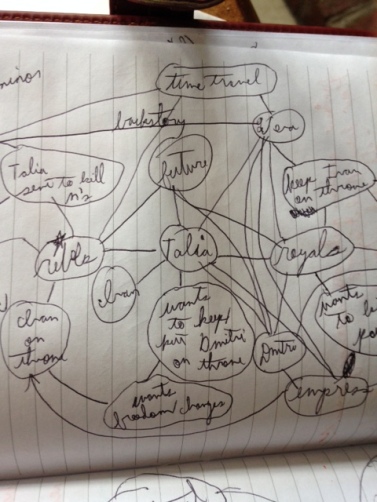
Outlining is often the dreaded phase of writing, perhaps only surpassed by the editing phase. You’re ready to start typing away, but you have to stop and write down all your jumbled thoughts first so you don’t forget. It’s exciting, but also intimidating. You’re going to launch into a story, maybe only three pages or perhaps three hundred depending on your cup of tea.
No matter how long your story is, I advise you make an outline.
Since Elementary school, I have had many teachers tell me I need outlines. Most of them I ignored. (If you haven’t picked up yet from my other posts, I was never a favorite of my English teachers.)
Want examples of why you should plot out your story? Just read my first two books, Black Forest and Hollow Dreams. They are examples of everything not to do when writing a book.
There’s no one perfect method for outlining. Every writer goes about it a little differently.
Below I include the methods I have found most useful.
- Notecards
While many authors love this method, I’m too disorganized to use it. Write one scene on different notecards until you have every scene in your book. Notecards give you the flexibility to shuffle scenes without reworking the entire outline and help you focus on one scene at a time. Warning: If you’re writing an epic, don’t use this method. More notecards equal more likelihood of them getting dropped and scattered. You don’t want to spend hours remembering where your scenes go after you drop them. I’ve done it, and it’s not fun.
2. yWriter
This free software helps you break your book up into chapters that you can move around or edit at any time. I preferred to write in Microsoft and copy and paste my words over, but you can also write directly in yWriter and skip Microsoft altogether. It also has sections for character bios and other fun things. It’s easy to use after you’re familiar with its many different settings.
If you want to check it out, click here.
3. The School Method
I also call this the classic method. You follow a standard outline, the kind with Roman numerals, filling in either chapters or any way you want to chop up your book. I suppose you could even fill it in using character viewpoints, but that might get tricky. The picture below is one I did. Instead of Roman numerals, I used dates and wrote beside them what scenes needed to happen at that time. This works especially well if you have a plot that goes day by day, such as action or thriller.
(Sorry for my atrocious handwriting in this picture.)

4. The Web
I start with the center idea or character of my story in the middle of the page. Around it, I include all the names of main and secondary characters, movements (revolutions, groups, etc.) and anything else vitally important to the plot. I circle each and then draw lines to all the things that interconnect.
For instance, take a look at the web I made for City of Deception, my upcoming YA novel.

If you look closely, you notice my main character, Talia, is at the center with lines connecting her to other characters and groups. This helps me visualize how all the characters interconnect and how their relationships influence each other.
5. Notebook
My favorite method so far. I’m a bit of a pantser, meaning I write mostly without strict outlines and sometimes even dare to write without any. As I’ve gotten older I’ve come to realize why an outline is necessary and try to balance both my plotter and pantser sides. All I do is take a notebook and write all my ideas in it. Either on the first page or last, I write down as many scenes as I have in the order I think I want them to be. Often this is only the beginning, end and the inciting incident. Over time I fill in the scenes I come up with, as well as put character bios or notes in the other pages of the notebook. If I don’t like where a scene is, I erase it or draw an arrow to where I want it to be. It gets messy over time, but it’s the best method I’ve found that gives me structure but not to the point of strangling my creativity.
There are hundreds of different outlining methods, and I haven’t even scratched the surface in the post. Those listed above are mostly the old-school, straightforward methods for outlining, but I’ve found old-school is often the best method when it comes to writing.
Get creative with your outline. Draw pictures if you’re an artist or come up with something unique. Every writer has their own methods and only you can come up with yours.
